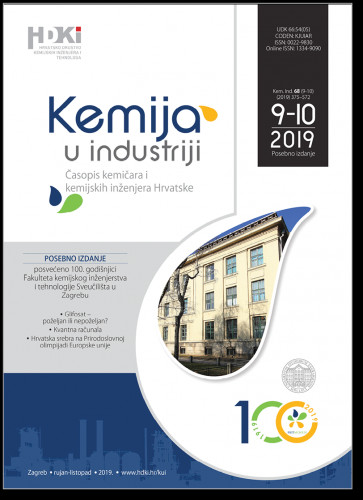U radu je dan pregled pojmova i jednadžbi vezanih uz određivanje zabranjene zone metodom difuzne refleksijske spektroskopije i uporabu Taucova grafičkog prikaza. Kako bi se demonstrirao postupak i vrednovala sama metoda, primjenom metode određena je zabranjena zona komercijalnih uzoraka anatasa, rutila, cinkita i hematita. Na temelju eksperimentalno dobivenih vrijednosti širine zabranjene zone komentirana je točnost metode te osjetljivost pri razlikovanju poluvodiča s direktnim i indirektnim prijelazima. Pokazano je da Taucova metoda nije besprijekorna niti u pogledu točnosti niti razlikovanja indirektnih i direktnih elektronskih prijelaza u poluvodičkim materijalima, ali je vrlo praktičan način određivanja širine zabranjene zone poluvodiča budući da ne zahtijeva pretjerano skupu instrumentaciju a obrada eksperimentalnih podataka relativno je jednostavna.; For the application of semiconductors, an important factor is the band gap, i.e., the minimum energy required for the transfer of electrons from the valence to the conduction band. One of the possible methods for band gap determination is diffuse reflectance spectroscopy and Tauc plot. In this paper, an overview of the terms and equations related to the said method is given, as well as its utilization in the determination of band gaps of commercial samples of various metal oxides. Thus, the procedure is demonstrated and evaluated through the determination of indirect and direct band gap values of anatase (TiO2), rutile (TiO2), zincite (ZnO), and hematite (Fe2O3). All samples were beforehand analysed and identified by X-ray powder diffraction on Shimadzu XRD 6000 diffractometer with CuKα radiation working in a step scan mode with steps of 0.02° and counting time of 0.6 s. It was determined that all samples are well crystallized with relatively large crystallite sizes. UV-Vis spectra of the samples, as well as barite, which was used as a reference, were obtained on the UV-Vis spectrometer with an integrating sphere in total reflectance mode. The UV-Vis DRS spectra were transformed to Kubelka-Munk function, after which Tauc plot was used for the determination of the indirect and direct band gap values of all samples. The obtained values for anatase were 3.20 eV for indirect transition and 3.41 eV for direct transition, and for rutile 3.00 eV for indirect transition and 3.11 eV for direct transition. The zincite sample showed an indirect band gap of 3.19 eV and direct band gap of 3.25 eV, while the obtained indirect band gap value for hematite was 1.96 eV and direct band gap value 2.15 eV.
Sažetak

 Kemija u industriji : 68,9-10(2019) / glavni i odgovorni urednik Nenad Bolf.
Kemija u industriji : 68,9-10(2019) / glavni i odgovorni urednik Nenad Bolf.